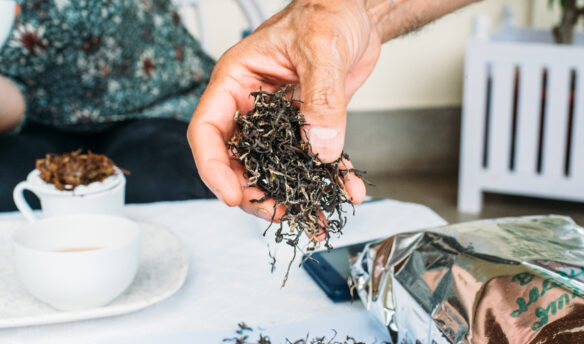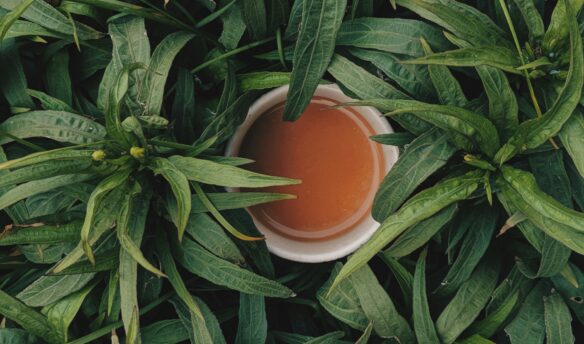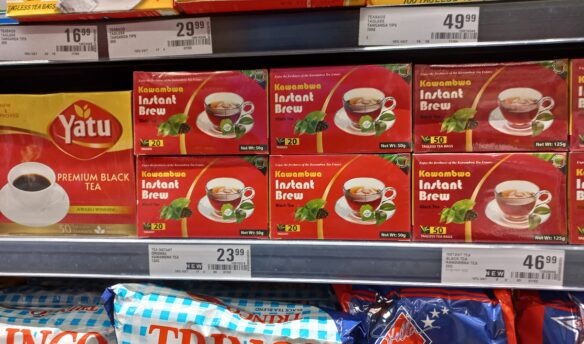[A] thoughtful, well-crafted tea program can be the finishing touch—or core component—for your café, coffee shop, or restaurant. In my work consulting and creating tea programs, I often meet with owners and managers who know they want an excellent tea program, but struggle when it comes to development and implementation. Having unique flavors can be a real draw for customers, so it’s important to approach your tea program strategically. Taking the time to evaluate who you are as a business, the vision you have for your tea program, and what resources you can allocate to tea will help you devise a successful tea menu.
The first step to building a tea program is reviewing your concept. Is your brand fast casual? Is it high end? Is there a deep focus on health and wellness or a specific culinary heritage? Reflecting on your concept will help you choose a selection of flavors that mesh with the pace of your business, as well as the needs of your customer base.
The next step is determining how many teas you want in your program. Are you looking to have a robust offering of both hot and iced teas, or are you more comfortable with a very simple approach, such as three hot teas and one iced tea? Again, knowing your concept and customer base can help you determine how big your menu should be. If your customers are just starting to learn about tea, pare down your offerings to keep it simple. For more coffee-and-tea-focused shops, consider how to incorporate unique teas and tisanes that will engage and excite your customers.
The third major pillar of a tea program is the iced tea service. How much space you have in your shop will usually determine how iced tea is incorporated into the menu. For cafés with more real estate to offer to their tea program, I recommend iced tea on display. We’ve found that iced tea sales can as much as quadruple if iced tea is displayed. Bold flavors like ginger and a pop of color (like hibiscus) can also really drive traffic towards the tea station. Having a black tea as a staple on your iced tea display is always a great idea.
Here’s a scenario to help illustrate how these steps can be applied to the retail setting. Take for example a high-volume café focused on quick service. We’d recommend a pared-down list of approachable flavors, including one stand-out iced tea (a great substitute for customers seeking healthier options). Because of the high-volume, using self-dispensed iced teas and hot teas in sachets make it easier for customers to grab and go.
Here’s how that menu might look:
HOT
Black: English breakfast or Earl Grey
Green: genmaicha or pan-fired green
Tisane: chamomile, peppermint, or something a little more unique like a chamomile-peppermint blend
ICED
Black: peppermint black, citrus black, or lemongrass black
Bold: “Stand-Out” Flavor: anything hibiscus or a fruit-forward green
This scenario won’t necessarily apply to every quick-service café, but it gives you an idea of how simple a successful tea program can be.
People frequently ask how many teas should be on their menu, and my answer is always the same: at least three hot and two iced. For iced teas, starting with one black and one herbal selection will satisfy much of your customer base, but adding a third option with a more nuanced flavor—like a black tea blended with forest berries—adds dimension to your program. Also, be sure to offer at least one non-caffeinated tisane as both a hot and iced preparation.
Another area where café owners and managers get stumped is choosing between loose tea and tea sachets—which is better? The answer to that question will again depend on your concept and your customers. Customizing your tea program is more easily achieved with loose tea, and savvy tea drinkers know that loose tea is typically a better grade. That being said, there are many excellent tea sachets on the market, and these can work well with a simple high-volume concept.
Once you’ve weighed your options, training your staff on the new menu is essential for a successful launch. Many tea companies offer training and will provide the appropriate materials and brewing instructions to ensure the best preparation of their product. (This is also something to consider as you look into building your tea program, as the resources offered by companies vary widely.)
One last thing to consider is developing a special tea blend for your shop. This can provide a unique drinking experience that customers can only get when they visit your café. There is a world of botanicals out there—whatever your concept, it is possible to find a tea blend that brings it to life.
—Jennie Ripps is the founder of Brew Lab Teas and Owl’s Brew.















